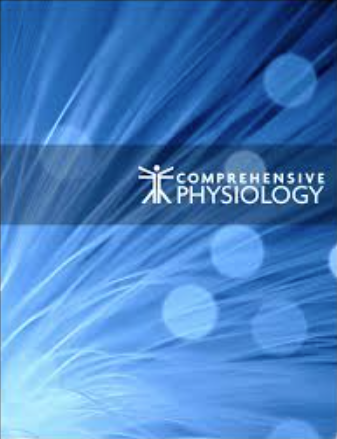求助PDF
{"title":"心脏移植:移植心脏的生理学和自然史。","authors":"Rabea Asleh, Hilmi Alnsasra, Mauricio A Villavicencio, Richard C Daly, Sudhir S Kushwaha","doi":"10.1002/cphy.c220001","DOIUrl":null,"url":null,"abstract":"<p><p>Heart transplantation (HT) is one of the prodigious achievements in modern medicine and remains the cornerstone in the treatment of patients with advanced heart failure. Advances in surgical techniques, immunosuppression, organ preservation, infection control, and allograft surveillance have improved short- and long-term outcomes thereby contributing to greater clinical success of HT. However, prolonged allograft and patient survival following HT are still largely restricted by the development of late complications, including allograft rejection, infection, cardiac allograft vasculopathy (CAV), and malignancy. The introduction of mTOR inhibitors early after HT has demonstrated multiple protective effects against CAV progression, renal dysfunction, and tumorigenesis. Therefore, several HT programs increasingly use mTOR inhibitors with partial or complete withdrawal of calcineurin inhibitor (CNI) in stable HT patients to reduce complications risk and improve long-term outcomes. Furthermore, despite a substantial improvement in exercise capacity and health-related quality of life after HT as compared to advanced heart failure patients, most HT recipients remain with a 30% to 50% lower peak oxygen consumption (Vo <sub>2</sub> ) than that of age-matched healthy subjects. Several factors, including alterations in central hemodynamics, HT-related complications and alterations in the musculoskeletal system, and peripheral physiological abnormalities, presumably contribute to the reduced exercise capacity following HT. Cardiac denervation and subsequent loss of sympathetic and parasympathetic regulation are responsible for various physiological alterations in the cardiovascular system, which contributes to restricted exercise tolerance. Restoration of cardiac innervation may improve exercise capacity and quality of life, but the reinnervation process is only partial even several years after HT. Multiple studies have shown that aerobic and strengthening exercise interventions improve exercise capacity by increasing maximal heart rate, chronotropic response, and peak Vo <sub>2</sub> after HT. Novel exercise modalities, such as high-intensity interval training (HIT), have been proven as safe and effective for further improvement in exercise capacity, including among de novo HT recipients. Further developments have recently emerged, including donor heart preservation techniques, noninvasive CAV and rejection surveillance methods, and improvements in immunosuppressive therapies, all aiming at increasing donor availability and improving late survival after HT. © 2023 American Physiological Society. Compr Physiol 13:4719-4765, 2023.</p>","PeriodicalId":10573,"journal":{"name":"Comprehensive Physiology","volume":"13 3","pages":"4719-4765"},"PeriodicalIF":4.2000,"publicationDate":"2023-06-26","publicationTypes":"Journal Article","fieldsOfStudy":null,"isOpenAccess":false,"openAccessPdf":"","citationCount":"0","resultStr":"{\"title\":\"Cardiac Transplantation: Physiology and Natural History of the Transplanted Heart.\",\"authors\":\"Rabea Asleh, Hilmi Alnsasra, Mauricio A Villavicencio, Richard C Daly, Sudhir S Kushwaha\",\"doi\":\"10.1002/cphy.c220001\",\"DOIUrl\":null,\"url\":null,\"abstract\":\"<p><p>Heart transplantation (HT) is one of the prodigious achievements in modern medicine and remains the cornerstone in the treatment of patients with advanced heart failure. Advances in surgical techniques, immunosuppression, organ preservation, infection control, and allograft surveillance have improved short- and long-term outcomes thereby contributing to greater clinical success of HT. However, prolonged allograft and patient survival following HT are still largely restricted by the development of late complications, including allograft rejection, infection, cardiac allograft vasculopathy (CAV), and malignancy. The introduction of mTOR inhibitors early after HT has demonstrated multiple protective effects against CAV progression, renal dysfunction, and tumorigenesis. Therefore, several HT programs increasingly use mTOR inhibitors with partial or complete withdrawal of calcineurin inhibitor (CNI) in stable HT patients to reduce complications risk and improve long-term outcomes. Furthermore, despite a substantial improvement in exercise capacity and health-related quality of life after HT as compared to advanced heart failure patients, most HT recipients remain with a 30% to 50% lower peak oxygen consumption (Vo <sub>2</sub> ) than that of age-matched healthy subjects. Several factors, including alterations in central hemodynamics, HT-related complications and alterations in the musculoskeletal system, and peripheral physiological abnormalities, presumably contribute to the reduced exercise capacity following HT. Cardiac denervation and subsequent loss of sympathetic and parasympathetic regulation are responsible for various physiological alterations in the cardiovascular system, which contributes to restricted exercise tolerance. Restoration of cardiac innervation may improve exercise capacity and quality of life, but the reinnervation process is only partial even several years after HT. Multiple studies have shown that aerobic and strengthening exercise interventions improve exercise capacity by increasing maximal heart rate, chronotropic response, and peak Vo <sub>2</sub> after HT. Novel exercise modalities, such as high-intensity interval training (HIT), have been proven as safe and effective for further improvement in exercise capacity, including among de novo HT recipients. Further developments have recently emerged, including donor heart preservation techniques, noninvasive CAV and rejection surveillance methods, and improvements in immunosuppressive therapies, all aiming at increasing donor availability and improving late survival after HT. © 2023 American Physiological Society. Compr Physiol 13:4719-4765, 2023.</p>\",\"PeriodicalId\":10573,\"journal\":{\"name\":\"Comprehensive Physiology\",\"volume\":\"13 3\",\"pages\":\"4719-4765\"},\"PeriodicalIF\":4.2000,\"publicationDate\":\"2023-06-26\",\"publicationTypes\":\"Journal Article\",\"fieldsOfStudy\":null,\"isOpenAccess\":false,\"openAccessPdf\":\"\",\"citationCount\":\"0\",\"resultStr\":null,\"platform\":\"Semanticscholar\",\"paperid\":null,\"PeriodicalName\":\"Comprehensive Physiology\",\"FirstCategoryId\":\"3\",\"ListUrlMain\":\"https://doi.org/10.1002/cphy.c220001\",\"RegionNum\":2,\"RegionCategory\":\"医学\",\"ArticlePicture\":[],\"TitleCN\":null,\"AbstractTextCN\":null,\"PMCID\":null,\"EPubDate\":\"\",\"PubModel\":\"\",\"JCR\":\"Q1\",\"JCRName\":\"PHYSIOLOGY\",\"Score\":null,\"Total\":0}","platform":"Semanticscholar","paperid":null,"PeriodicalName":"Comprehensive Physiology","FirstCategoryId":"3","ListUrlMain":"https://doi.org/10.1002/cphy.c220001","RegionNum":2,"RegionCategory":"医学","ArticlePicture":[],"TitleCN":null,"AbstractTextCN":null,"PMCID":null,"EPubDate":"","PubModel":"","JCR":"Q1","JCRName":"PHYSIOLOGY","Score":null,"Total":0}
引用次数: 0
引用
批量引用


